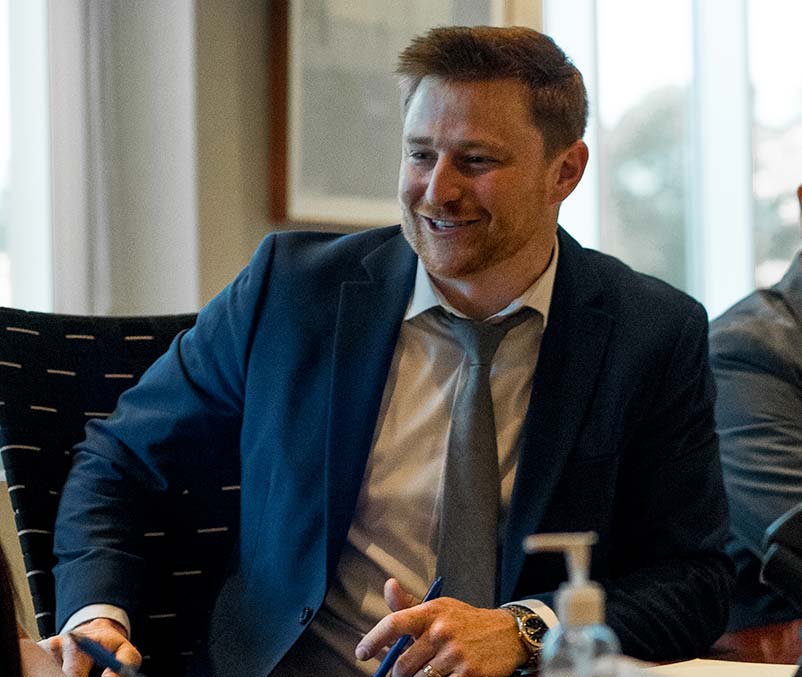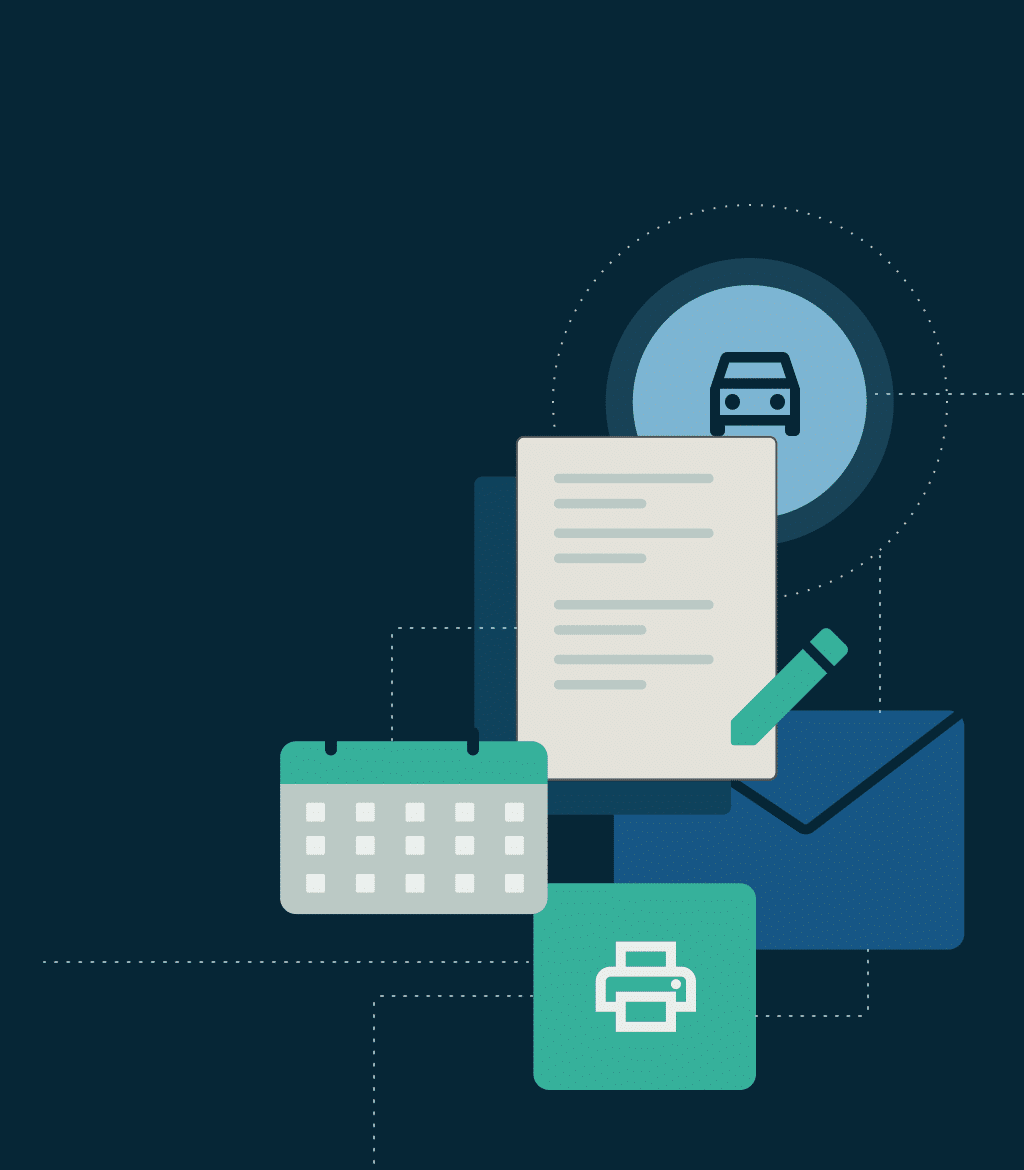Client Stories | Daniel Schneiderman
“Before with our other practice
management platform, it was pretty much
just document storage.”
Daniel continues, “Where now it’s moved on to all these other intrinsic parts of our practice, which
has been really helpful.”

Few eight-year-olds say they want to be a lawyer when they grow up. But Daniel Schneiderman did.
And though most other adults end up in careers quite different from what they’d envisioned at age eight, Daniel achieved his childhood goal. Currently a name partner in Gingery Hammer & Schneiderman LLP, a California firm specializing in personal injury law, Daniel previously served as a deputy district attorney for Sacramento County and ran a solo practice. Among other accolades, he has been rated by Super Lawyers as being within the top 2.5% of attorneys under 40.
All this, he says with a laugh, makes him “the odd duck” in his family. His parents and his brother are physicians, and his paternal grandfather, an engineer, was the project manager for several Mariner space missions, including Mariner 4, which provided the first close-up photos of Mars.
Daniel did inherit some of his grandfather’s love of engineering and technology—his garage is a trove of items he’s produced with his 3-D printer. But “I just always wanted to be in the courtroom,” he says. “I don’t know if it was from watching movies or what. I loved the mock trial stuff. I did that in high school and carried on through college. I just enjoyed getting up on a stage and putting on a trial and doing things in a logical manner.”
Daniel’s love of logic and his engineering sensibility led to an interest in legal tech early on: “When I was a law clerk and I was in charge of making medical records summaries over and over and over again, I was like, ‘Man, what if there was a program we could develop that would just help us summarize this stuff in a tech-savvy way, an efficient way?’ Of course, I was a law clerk, so it’s not like I could go out and pay for something like that at the time.”
Daniel worked his way up to became a deputy D.A., but “I ultimately realized just being on the prosecution side of criminal work wasn’t for me. I think I was born to be a criminal defense attorney but didn’t want to be a criminal defense attorney,” he recalls. “So I ended up going, ‘Okay, where am I going to get trial experience? Where am I going to continue this progression of being able to do what I want to do, which is try cases in front of your peers?’”
He moved into civil litigation, working at a personal injury firm and then setting up his own practice. “I really found an appeal in the civil world because you get to choose your clients,” he says. “You get to fight for your clients. The people you choose to fight for are people you ride or die with.”
Choosing to ride with a former client—or rather, to respond to a former client’s voice message—led to one of Daniel’s biggest cases. Several years after working with a woman and her son at his previous firm, Daniel received an almost incomprehensible message from her on his cell phone. Despite the garbled voice mail, he called back and learned that his former client’s father had suffered a severed spinal cord while volunteering at a food bank, the result of someone dropping several hundred pounds of fruit on him. Daniel immediately took the case, eventually settling for $7.5 million and putting his private practice into high gear.
“For me, the big lesson was you never take any call for granted,” Daniel says. “I answer calls at 11:00 PM on a weekend, I answer calls at 2:00 AM over a weekday. I’ll call that person back. I’ll email that person back. Because you never know who you can help and who’s going to be in a position to ultimately help you.”
Migration and Centralization
After moving into the private sector, Daniel began searching for the ideal legal software program. “I have used, I believe, five practice management software programs in the past five or six years,” he says. One program he settled on had numerous features he appreciated and allowed a certain amount of flexibility, but a major drawback was its emphasis on hourly billing. Because it didn’t track contingency fees and the like, “it would show up every morning that I made zero dollars,” Daniel says. “You have to do all this manual billing stuff on there to get it to register on their dashboard. I’m like, ‘Come on… you’re telling me I made $0 so far this year? What the hell?’”
When Daniel merged his firm with that of Justin Gingery and Jeffrey Hammer in January 2021 to form Gingery Hammer & Schneiderman, the partners needed to all be using the same legal software program. What’s more, because Daniel is based in San Diego while Justin and Jeffrey operate out of offices outside Sacramento, the partners wanted to migrate to the cloud. At first Daniel advocated for moving his partners’ business—including their 1,300 active and archived cases—onto the cloud platform he was already using. But Justin insisted on investigating a few other options as well, one of which was CloudLex.
Once Daniel discovered that CloudLex had numerous features he’d been “desperately wishing” the software he was using had, he was sold. “We made the switch to CloudLex, dust settled and it was just an awesome decision,” he enthuses. “It’s like the iPhone of practice management software.” The firm migrated all 1,300-plus cases to CloudLex, using the secure, HIPAA-compliant Digital Archiver to store all data related to the inactive cases. Fully integrated with Dropbox, Google Drive and OneDrive, the Digital Archiver uses advanced AI-enabled search for added efficiency. CloudLex also tracks contingency fees, mitigating the need for manual inputting. And because CloudLex is intuitive and user-friendly, the firm’s staff are continually creating and sharing workflow improvements. “They’re sending out little features to us every other week saying things like, ‘Hey, guys, we can do this. We can put the insurance information in this section or in this,’” Daniel says.
We made the switch to CloudLex, the dust settled and it was just an awesome decision. It’s like the iPhone of practice management software.
The Impact
“Before with our other practice management platform, it was pretty much just document storage,” Daniel continues, “where now it’s moved on to all these other intrinsic parts of our practice, which has been really helpful.” In fact, as the firm ramped up its centralization efforts during the COVID pandemic, “the thing we decided to centralize around was CloudLex. Practice management, tracking financials, tracking bills, records, document storage: Everything went through it. It has an email-saving capability that I know seems like a very small thing, but it makes it so my staff doesn’t have to go and manually drag an email into a browser every time. Instead they can go through the CloudLex platform and it automatically saves and is tracked.”
This centralization improves not only efficiency but, according to Daniel, morale as well. “There’s one person presenting this at trial in a courtroom at the end of the day, even if six people are working on that case, on these different issues throughout it.” With CloudLex, it’s clear who is involved at every touchpoint, encouraging ownership of and pride in the work. “Winning a trial is great, but even the wins aren’t as sweet if your employees don’t know how they impacted that ultimate result,” he notes. All of which enables Daniel and his firm to focus even more on getting the best results for their clients. “It’s a service industry at the end of the day,” Daniel says. “You’re there to take care of clients.”
See CloudLex in action
Discover why thousands of Personal Injury attorneys choose CloudLex
Whether you’re a new firm branching out or are an established national practice, CloudLex caters to the specific needs of personal injury law firms, ensuring you have the precise tools to optimize your operations, increase productivity and deliver superior client experiences.
